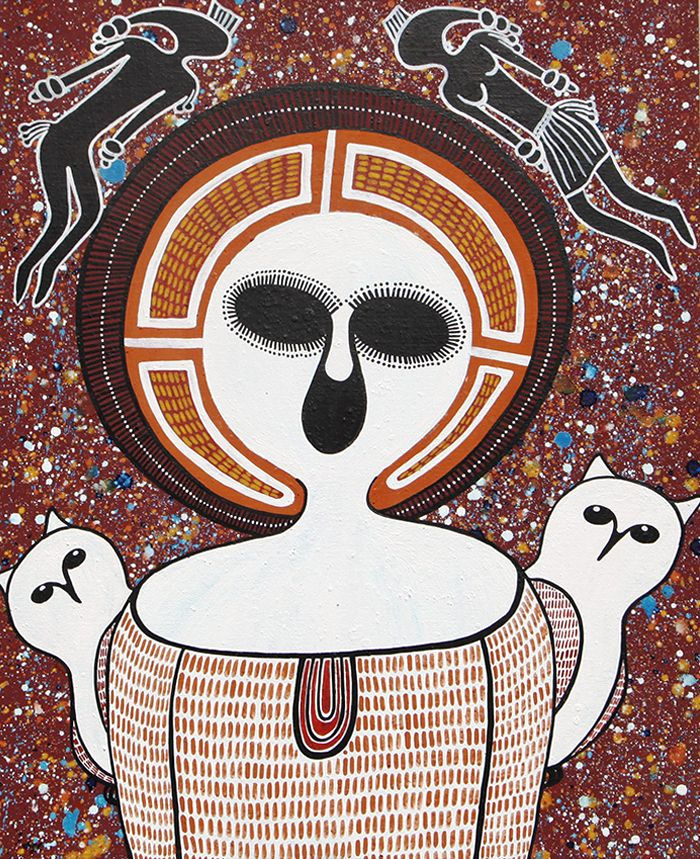God is a Wandjina: An Indigenous Perspective on Christianity in Australia (Part 2)
- Renee Spencer
- Jul 21, 2024
- 3 min read
Updated: Jul 23, 2024
PART 2 OF 2
A few days ago, I posted a series of blogs that looked at the nuanced relationship between some of Australia’s biggest and most influential Christian missionaries - Catholic, Lutheran, and Anglican - on Indigenous Australians. On one hand, these institutions did a lot of great work to mitigate colonial abuse such as genocide and slavery, while on the other, they are also affiliated with contributing to atrocities like removal from country and the Stolen Generation. Given this nuanced relationship, I have often wondered why so many Indigenous Australians still embraced Christianity, seemingly of their own free will. A documentary by the ABC titled “God is Wandjina” help to fill this gap of understanding.
God is Wandjina
The documentary explains how the Uniting Church (then the Presbyterian Church) set up a mission in Kunmunya, 1916, in Western Australia’s Kimberly’s region. While evangelising and “civilising” Australia’s Indigenous was a core objective, this was not done through overt persuasion. (The Uniting Church ranks as one of the safest Christian groups on Renee’s Cult Ranking with a score of 0. Likewise, the Presbyterian Church also ranks low on coercive control.) Church leaders of the time took the effort to learn the local language and showed respect for the deeply spiritual reverence they had for the land. As the relationship continued, rather than assimilating the Indigenous culture into Christianity, there was a sharing of common faith that enriched both groups.
With poise and reverence, Elder Janet Oobagooma explains how the common ground was found through the understanding that her mob had always believed in “Wandjina”, a creative spirit who created life:
God is a Wandjina. They used to say, “He made me.” Old people used to say... [..] They knew that he’s a life giver, a food giver and, yeah, a lifesaver. And that’s how Aboriginal people believe that Wandjina is sacred. [..] He displayed himself on the stone.
Pastor Kirsty Burgu (Australia’s first Aboriginal pastor) continued to explain the parallels; of how her ancestors would perform rituals in honour of Wandjina:
The old men were like high priests. You know how the high priests used to go into the temple, or, you know, the sacred area and go and talk to God in Moses’ time.
We don’t think about it, but all our stories connect with the Bible, I have my Jesus here, this Wandjina.
Lessons From the First Nation People of the Kimberley's
In my humble opinion, Christianity has a tendency to become very abstract. Focus on theology, future predictions, and afterlife doctrines, distracts from the here and now. However, the First Nation people of the Kimberley’s relationship to the land brings such abstraction back down to earth, literally. To Aboriginal communities, celebrating God - called by any name - means respecting the environment. Moreover, respecting the spirits of ancestors who looked after the land with the view to protecting resources and ensure there would always be an abundance of food, water, and shelter for generations to come.
The willingness to be open to alternative perspectives of a supreme omnipresent god figure, as presented by the missionaries in Kunmunya, is a shining example of how the human spirit is capable of respecting cultures and beliefs of others. Further, that doing so can be of benefit to all. The ultimate moral of the story could be viewed as recognising how looking for similarities, instead of differences, forges positive relationships.
Bigger Picture Lessons
This story of Australian Aboriginal's embracing Christianity presences many aspects that can be examined to understand human nature and the dissemination of Christianity in general. There is no one an absolute way of experiencing Christianity, it has always been a religion of interrogation. There is ample evidence suggest the first disciples went out evangelising, not with the intention of creating cult-like dominance over others, rather to share a common unity through love and peace. In upcoming blogs, I will explore how some other cultures influenced the development of Christianity, namely Persian, Greek, and Roman influences.
Examining the interrelationships of Christianity and other belief systems is of the upmost importance when comparing Christian groups that use coercive control to those that do not. This concept may even be extended to other religions such as Judaism, Islam, Buddhism, Hindu, and New Age philosophies. None of these belief systems are innately harmful. It is only when authoritarian leaderships try to dominate others that ideologies become weaponised and lead to destructive tendencies.

Comments